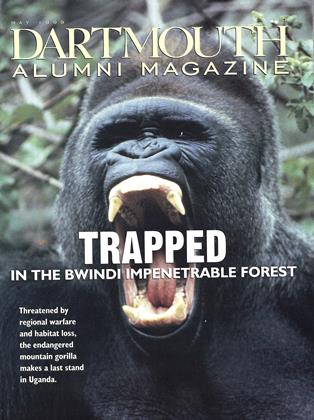In this age of the Internet it is hard to imagine that for the first half of this century, and especially during the World War I era, the poster was a predominant means of mass communication. Although the advent of such competing technologies as radio and newsreel films had reduced its importance by World War II, the poster remained valuable for its expediency, directness, and legibility.
And now posters are recognized as art. "War posters occupy a unique place in the visual landscape of the twentieth century. As quintessential public statements meant to persuade during periods of great crisis, they engage our deepest hopes as well as our darkest fantasies," says Hood Museum of Art research curator Diane Milliotes. Between March 30 and July 4 the Hood is exhibiting some 70 posters from the first arid second World Wars drawn almost exclusively from the musuem's holdings of more than 2,300 twentieth-century war posters. This exhibition offers the first representative overview of this rarely displayed portion of the museum's collections. The works in the two rooms of the exhibition, each devoted to a single war, are organized according to a series of common themes: the ideal soldier, picturing the enemy, sacrifice of soldiers, war victims, national symbols, various home front issues, and images of women. While this exhibition will surely evoke memories for some viewers, notes Mihiotes, "These themes highlight the continuities and transformations in the posters' content and their pictorial strategies across the two wars."
TAKE THEM TO YOUR MEAT DEALER
 View Full Issue
View Full Issue
More From This Issue
-
 Cover Story
Cover StoryTrapped in the Bwindi Impenetrable Forest
May 1999 By ALIETTE FRANK '00 -
 Feature
FeatureHue and Cry at the Whitney
May 1999 By Jeanhee Kim '90 -
 Feature
FeatureStage Struck
May 1999 -
 Class Notes
Class Notes1971
May 1999 By Don O'Neill -
 Article
ArticleThe Financing Game
May 1999 By Noel Perrin -
 Article
ArticleThe Masculine Mystique
May 1999 By Suzanne Leonard '96







